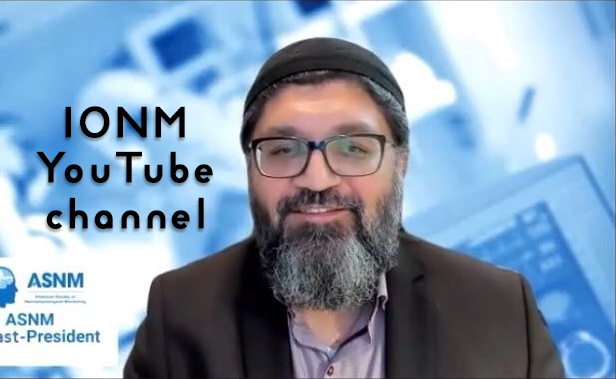The Role of Extraocular Muscle Monitoring in Brainstem Surgeries
DOI:
https://doi.org/10.5281/zenodo.10575527Keywords:
Oculomotor, trochlear, abducens, cranial nerves, neuromonitoring, IONM, EMG, CN, TOFAbstract
Intraoperative neurophysiological monitoring (IONM) is valuable in various surgical procedures. In cases where the brainstem is the target, monitoring the extraocular muscles can assist in reducing the risk of injury and preserving neural function. Delicate cranial nerves are frequently encountered during cranial base surgeries, and their lack of epineurium makes them highly vulnerable to damage. IONM provides continuous feedback on the integrity of cranial nerves, enabling surgeons to operate on offending lesions while minimizing the risk of injury. The selection of neuromonitoring techniques used depends on the location of the lesion being operated on.
References
Iaconetta G., de Notaris M., Cavallo L. M., et al. The oculomotor nerve: microanatomical and endoscopic study. Neurosurgery. 2010;66(3):593–601. doi: 10.1227/01.neu.0000365422. 36441.c8.
Kawamata T, Ishii N, Amano K, Namioka T, Hori T, Okada Y. A novel, simple real-time electro oculographic monitoring system during transsphenoidal surgeries to prevent postoperative extraocular motor nerve dysfunction. Neurosurg Rev. 2013; 36:371–6.
San-Juan D., Barges-Coll J., Gómez Amador J. L., et al. Intraoperative monitoring of the abducens nerve in extended endonasal endoscopic approach: a pilot study technical report. Journal of Electromyography and Kinesiology. 2014;24(4):558–564. doi: 10.1016/j.jelekin.2014.04.001.
Raftopoulos C Abu Series B Duprez T Docquier M A Guérit J M Microsurgical results with large vestibular schwannomas with preservation of facial and cochlear nerve function as the primary aim Acta Neurochir (Wien) 2005734697–706., discussion 706.
Ingster-Moati I, Bui Quoc E, Pless M, Djomby R, Orssaud C, Guichard JP, et al. Ocular motility and Wilson's disease: A study on 34 patients. J Neurol Neurosurg Psychiatry. 2007; 78:1199–201.
Marmor MF, Zrenner E. Standard for clinical electro-oculography. International Society for Clinical Electrophysiology of Vision. Arch Ophthalmol. 1993; 111:601–4.
Møller AR, editor. Intraoperative Neurophysiological Monitoring. 3rd ed. Totowa, New Jersey: Humana Press; 2011. Practical aspects of monitoring cranial motor nerves; pp. 235–60.
Sekiya T, Hatayama T, Iwabuchi T, Maeda S. Intraoperative recordings of evoked extraocular muscle activities to monitor ocular motor nerve function. Neurosurgery. 1993; 32:227–35.
Sekhar L. N., Moller A. R. Operative management of tumors involving the cavernous sinus. Journal of Neurosurgery. 1986;64(6):879–889. doi: 10.3171/jns.1986.64.6.0879.
Melek NB, Blanco S, Garcia H. Electro-oculography of smooth pursuit and optokinetic nystagmus eye movements in type I Duane's retraction syndrome. Binocul Vis Strabismus Q. 2006; 21:37–44.
Khan, Aisha, and Faisal R. Jahangiri. "The Role of Extraocular Muscle Monitoring in Brainstem Surgeries." https://www.Globalinnervation.Com/. January 17, 2024. https://globalinnervation.blogspot.com/2024/01/the-role-of-extraocular-muscle.html.
Downloads
Published
How to Cite
Issue
Section
License
Copyright (c) 2024 J of Neurophysiological Monitoring

This work is licensed under a Creative Commons Attribution 4.0 International License.





